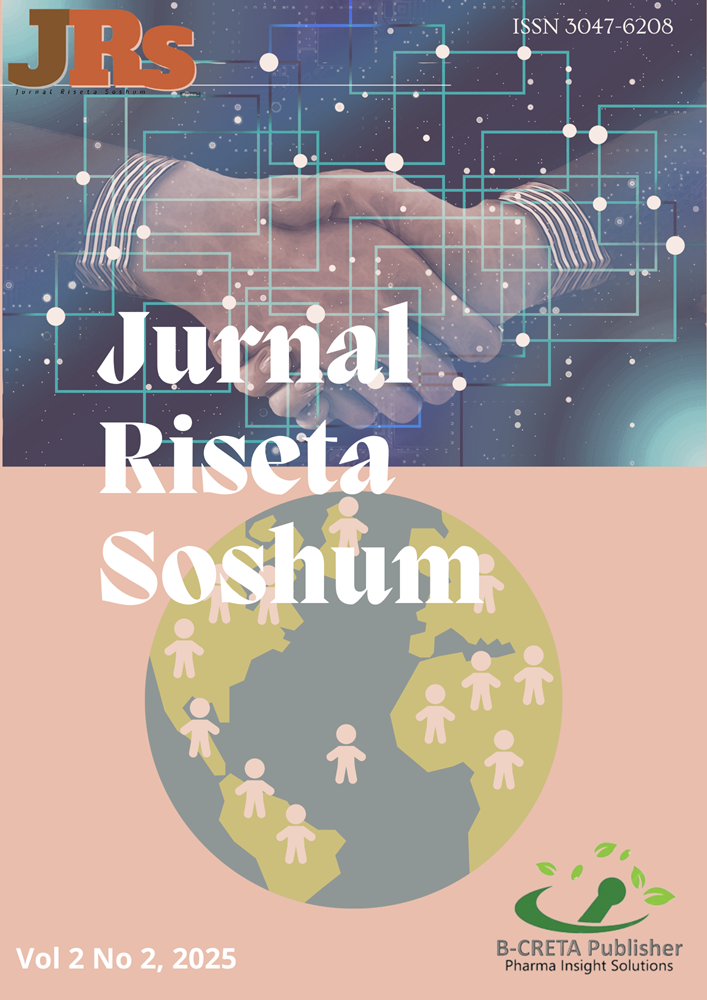Exploring Deep Learning Practices in Social Studies within Inclusive Elementary Classrooms
Eksplorasi Praktik Pembelajaran Mendalam IPS dalam Kelas Inklusif di Sekolah Dasar
DOI:
https://doi.org/10.70392/jrs.v2i2.4754Keywords:
deep learning, Social Studies, inclusive education, elementary school, pedagogical strategiesAbstract
This study aims to explore the implementation of deep learning practices in Social Studies instruction within inclusive elementary school classrooms. Within the framework of inclusive education, teachers are expected not only to deliver content but also to create learning environments that are responsive to the diverse needs of all learners. Deep learning, which emphasizes conceptual understanding, the interconnection of ideas, and real-life application, emerges as a promising approach to foster active participation among all students. This qualitative research employed a case study design involving three inclusive elementary schools in Indonesia. Data were collected through classroom observations, in-depth interviews, and document analysis. The findings reveal that deep learning practices are implemented through collaborative methods, the integration of local issues, the use of visual media, and differentiated instruction. However, several challenges were identified, including limited teacher training, administrative burdens, and inadequate resources. The study highlights the critical need for inclusive pedagogical training grounded in deep learning principles, as well as institutional support, to enhance the quality of Social Studies education in inclusive classroom settings.
References
Booth, T., Ainscow, M. The Index for Inclusion. CSIE, 2016.
Florian, L. Inclusive pedagogy. Oxford Review of Education 2015, 41(1), 1–14.
Tomlinson, C.A. The Differentiated Classroom. ASCD, 2014.
Darling-Hammond, L., et al. Deeper Learning: Opportunities and Outcomes. Harvard Education Press 2019.
Banks, J.A. Cultural Diversity and Education. Routledge 2016.
Mehta, J., Fine, S. In Search of Deeper Learning. Harvard University Press 2019.
Loreman, T. Pedagogy for inclusive education. Oxford Encyclopedia of Education 2017.
Kiuhara, S. A., et al. Teachers’ writing instruction in inclusive classrooms. Exceptional Children 2019, 85(3), 263–280.
Subban, P., Mahlo, D. Effective inclusive practices. International Journal of Inclusive Education 2017, 21(4), 389–406.
Forlin, C., Chambers, D. Teacher preparation for inclusive education. Asia-Pacific Journal of Teacher Education 2016, 44(4), 289–305.
Mamahit, N.E. Strategi pembelajaran IPS untuk siswa berkebutuhan khusus. Jurnal Inklusi Pendidikan 2021, 9(1), 45–56.
Miles, M.B., Huberman, A.M., Saldaña, J. Qualitative Data Analysis (3rd edition). SAGE 2014.
Suastra, I.W., Jatmiko, B. Pembelajaran kontekstual untuk IPS. Jurnal Pendidikan IPS 2018, 25(2), 145–157.
Astuti, Y. Strategi pembelajaran aktif dalam IPS SD. Jurnal Pendidikan Dasar 2020, 12(1), 34–42.
Wahyuni, S. Pengembangan model pembelajaran reflektif. Jurnal Kependidikan 2020, 24(2), 203–215.
Meyer, A., Rose, D.H., Gordon, D. Universal Design for Learning. CAST 2014.
Rohendi, D. Media pembelajaran digital untuk kelas inklusif. Jurnal Inovasi Pendidikan 2019, 6(3), 251–263.
Kurniawan, H. Kolaborasi guru dan orang tua dalam pendidikan inklusif. Jurnal Pendidikan Khusus 2018, 10(1), 12–20.
Handayani, S., Putri, A. Pelatihan integratif pedagogi inklusif. Jurnal Pendidikan dan Kebudayaan 2023, 13(4), 67–74.
Sari, D.K., Gunawan, R. Peran media visual dalam pembelajaran IPS. Jurnal Teknologi Pendidikan 2024, 10(2), 112–123.
Downloads
Published
Issue
Section
License
Copyright (c) 2025 Saqjuddin saqjuddin, Chairan Zibar L. Parisu, Erwin Aksa Saputra (Author)

This work is licensed under a Creative Commons Attribution-NonCommercial-ShareAlike 4.0 International License.






